Spitfire Mk.I (Early)
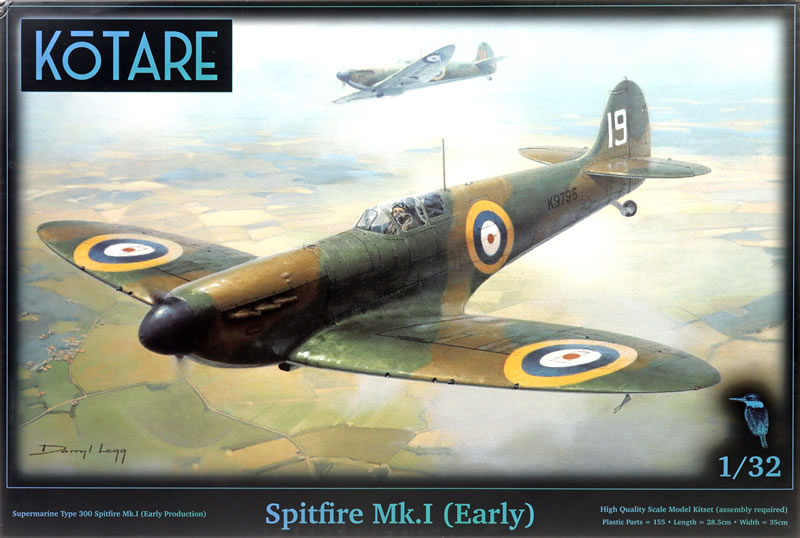
Kotare Models, 1/32 scale
S
u m m a r y : |
Description and Item No.: |
Kotare Models Kit No. K32004 - Spitfire Mk.Ia (Early) |
Contents and Media: |
140 parts in grey coloured plastic (13 parts marked not for use); 13 parts in clear (2 parts marked not for use); decals with three marking options; 28 page A4-sized instruction book. |
Price: |
USD$109.00 plus shipping available online from Kotare Models' webstore |
Scale: |
1/32 |
Review Type: |
First Look |
Advantages: |
Clever parts breakdown; new parts speciffically for an early production Spitfire Mk.I, many never before offered in 1/32 scale; manageable number of parts; beautifully detailed; perfectly moulded; authentic surface textures; comprehensive instructions and notes; high quality Cartograf decals. |
Disadvantages: |
None noted. |
Recommendation: |
Another Spitfire? Yes please!
This is the first time that we have had a true early production Spitfire Mk.I in 1/32 scale.
Kotare Models has delivered the Goldilocks Spitfire again – detail and buildability are just right. The relatively modest parts count does not compromise detail at all.
Kotare's Spitfires are clearly the best 1/32 scale Spitfire Mk.I available today.
Everything you need to model a beautifully detailed early and pre-war Spitfire is right here in the box. It looks like all the parts for the previous mid-production Spitfire Mk.Ia are still on the sprues too, so this represents a very versatile box of Spitfire bits.
This is another superb Spitfire offering from Kotare. |
Reviewed by Brett Green

Another Spitfire, I hear you ask?
The Spitfire Mk.I has been relatively poorly served in 1/32 scale until Kotare came along last year.
Revell released a 1/32 scale Spitfire Mk.I in 1967. This was a nice kit for its day with recessed panel lines, but numerous accuracy issues and gimmicks such as moveable control surfaces and a basic engine relegates it to history.
Hasegawa’s 2001 effort at a Spitfire Mk.I was to combine the fuselage and other parts from its 1970s-vintage Spitfire Mk.Vb with new wings, propeller assembly, exhausts and decals. Unfortunately, the old parts featured the original raised panel lines while only the new parts had recessed surface textures. The Hasegawa kit was burdened with the basic cockpit of the original Mk.Vb too.
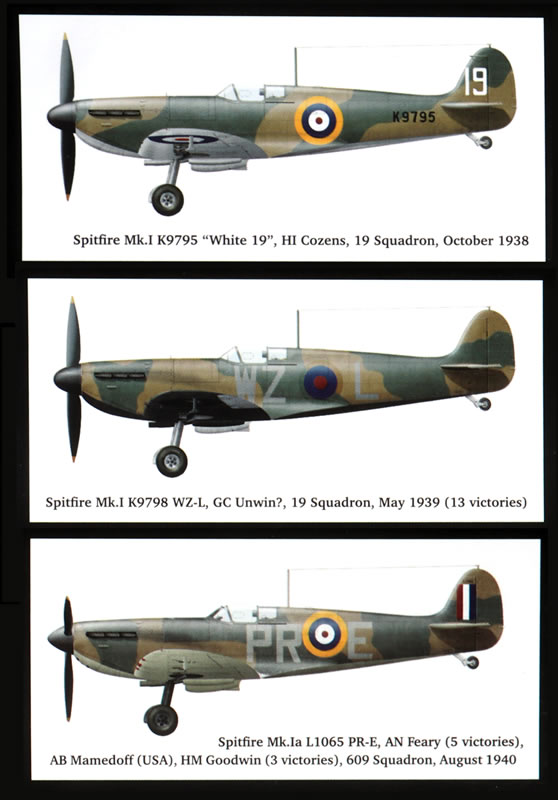
Fast forward to 2015, and Revell had a second all-new attempt at a 1/32 scale early Spitfire. It is a Mk.II, but it is an easy matter to backdate the kit to a Mk.I.
Detail is quite good and shapes are generally accurate, but there is a smattering of baffling errors and omissions - metal ailerons, incorrect style of oil cooler fairing, simplified radiator, heavy surface detail, missing details and poorly shaped spinner - that mean it does not live up to its potential as the large-scale budget priced early Spitfire of choice.
2023 saw newcomer Kotare release their gorgeous 1/32 scale Spitfire Mk.I mid-production to universal acclaim. The model was so popular that it has now sold out. A Limited Edition kit was added to the range later in mid-2023 commemorating Battle of Britain pilot Brian Lane. The kit featured a pilot figure in Lane's likeness and decals for one of his aircraft.
Kotare Models is the brainchild of modeller, veterinary specialist and owner of the fabulous Modelair hobby shop in Auckland New Zealand, Mark Robson.
Mark has put together a team with some names that will be familiar to Wingnut Wings fans including General Manager - Richard Alexander, Product Designer - Darren Mildenhall, Decal Artist - Malcolm Laird, Profile Artist – Ronny Bar and more.
The latest release for this new venture is a 1/32 scale early-production Spitfire Mk.I.
On their website, Kotare defines early-production as in the K9### & L10## serial number range completed between May 1938 and September 1939, initially powered by a 1030hp Rolls-Royce Merlin II engine and featuring a 2-blade fixed pitch Watts propeller, 8 Browning .303” machine guns, triple ejector nozzle outlet exhaust manifolds, a tall un-tapered aerial mast and a rear fuselage adorned with lapped panels with raised rivets for ease of construction. The main planes and front of the fuselage were flush riveted and puttied and sanded smooth for improved performance.
Kotare also points out that numerous improvements were introduced throughout production, many of which were eventually retrofitted to earlier aircraft. These included gun heating, Rolls-Royce Merlin III engine, 3-blade dual-pitch DeHavilland propeller, exhaust manifolds of simplified construction, single tube pitot head, reflector gun sight and a taller canopy hood for improved visibility.
Kotare has included parts to cover the initial configuration and the improvements in this box.
The main differences between Kotare's initial mid-production kit and this new early-production kit is a brand new sprue in grey plastic and new clear plastic parts.
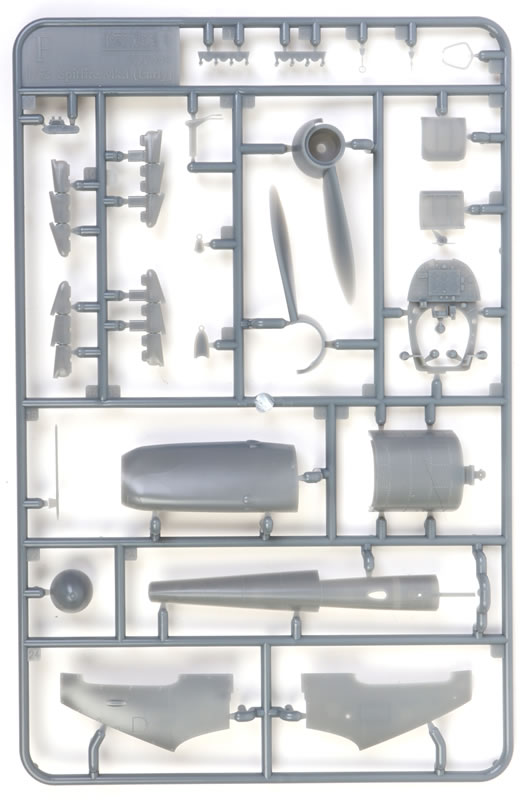
The early-specific parts on the new grey sprue include:
-
unarmoured and exposed fuel tank,
-
original style non-trimmed cowlings,
-
2-blade Watts propeller and separate cap,
-
open & closed “ring-pull” cockpit doors,
-
ring & bead sights,
-
narrow aerial mast,
-
gun flash eliminators,
-
anti-spin parachute guard,
-
external Type 22 camera gun,
-
dual tube pitot head,
-
early style exhaust manifolds
-
early-style instrument panel
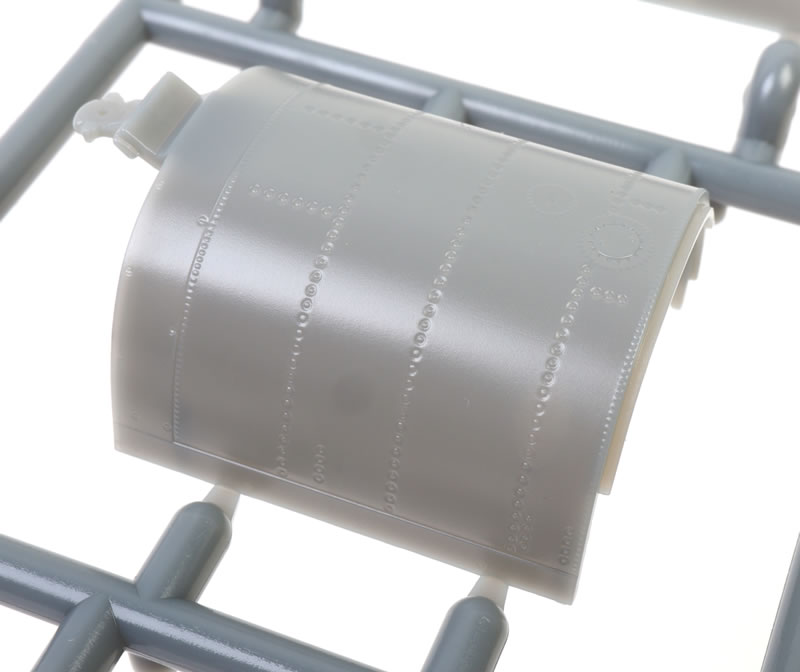
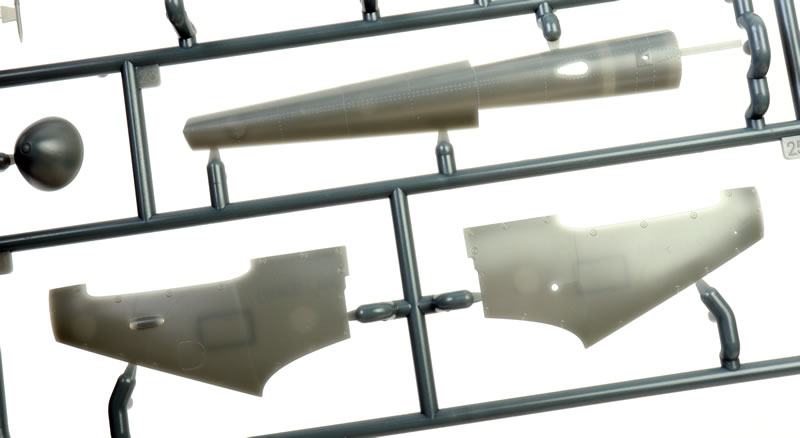

Non-armoured canopies with flat and raised hoods and with open and closed options have been added to the clear sprue.
All the other sprues that appeared in the mid-production release - A, B, C, D and E, as well as the clear parts - are unchanged so if you want to build a mid-production from this box, all you will need is an appropriate set of decals.
Let's take a look at the overall package.
Kotare Models’ 1/32 scale Spitfire Mk.I (early) comprises 140 parts in grey coloured plastic (including 16 parts not used), 13 parts in clear (2 not used), decals with three marking options and comprehensive instructions in an A4-sized 28 page book.
First, let’s talk about the number of parts. In today’s era of uber-kits, manufacturers seem to be in a race to the highest number of parts possible. This is especially true of military kits but we have seen the parts count of aircraft kits rising too.
Kotare is bucking this trend with a very modest 133 grey plastic parts. They have managed this feat without compromising detail. Kotare has moulded much of the detail as single parts. Looking at the port side lower cockpit sidewall for example, Kotare presents a single part with oxygen bottles, throttle quadrant, dials and boxes all moulded in place but detail does not suffer at all.
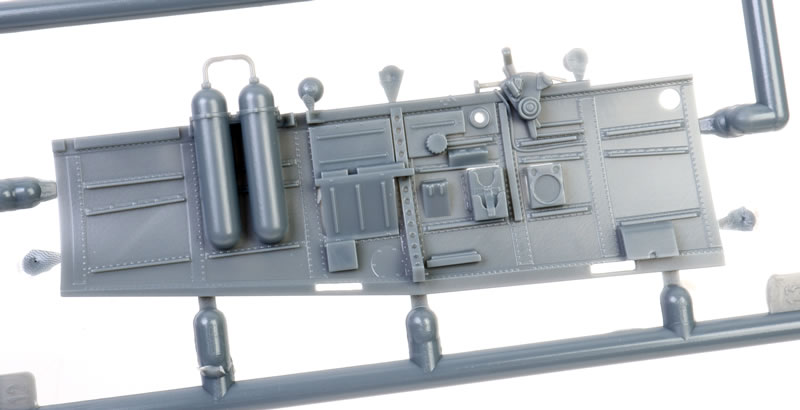
The kit is replete with similar examples – why design a seven-piece sub-assembly when you can mould it as one part? This seems to be the Kotare Spitfire’s philosophy.
I think this approach will appeal to many modellers who would like to build a beautifully detailed kit but feel intimidated by the daunting parts count of many recent releases.
It also points to Kotare’s Spitfires as kits to build, not to sit on the shelf.
Surface textures are subtle and convincing. A combination of recessed panel lines, recessed fasteners and raised rivets delivers an authentic effect overall.
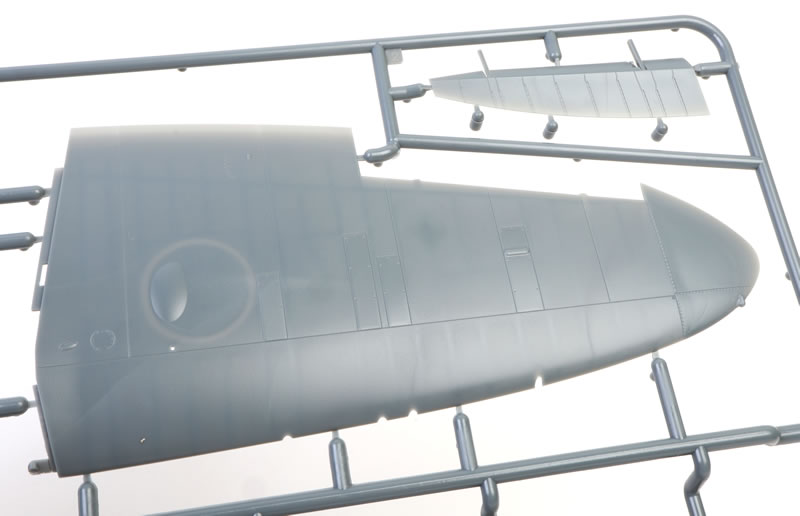
Fabric effect is limited to stitched strips.
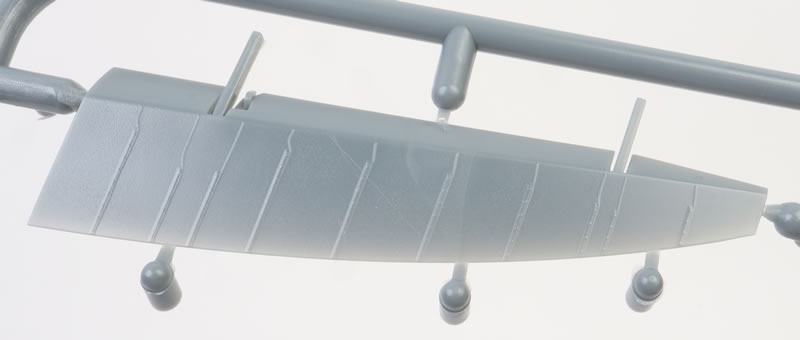
The cockpit is a work of art. I have already mentioned the sidewalls, but the seat and the instrument panel are also worthy of special notice. The instrument panel is a single solid plastic part with dial, bezel and switch detail moulded crisply in place. The compass and mount are moulded onto the bottom of the panel. Decals are supplied for the dial detail in single, pairs and trios.
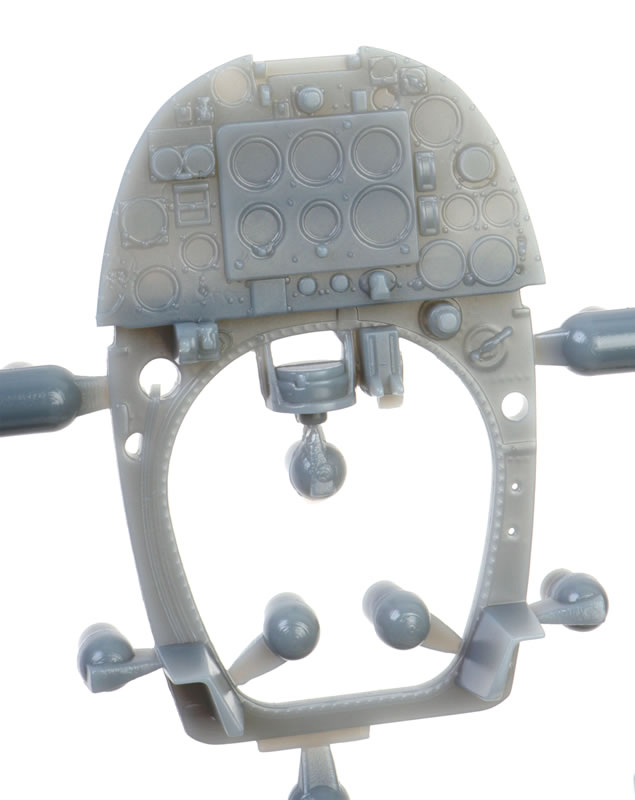
I particularly like that Kotare has provided the option of a seat with moulded-on Sutton harness.
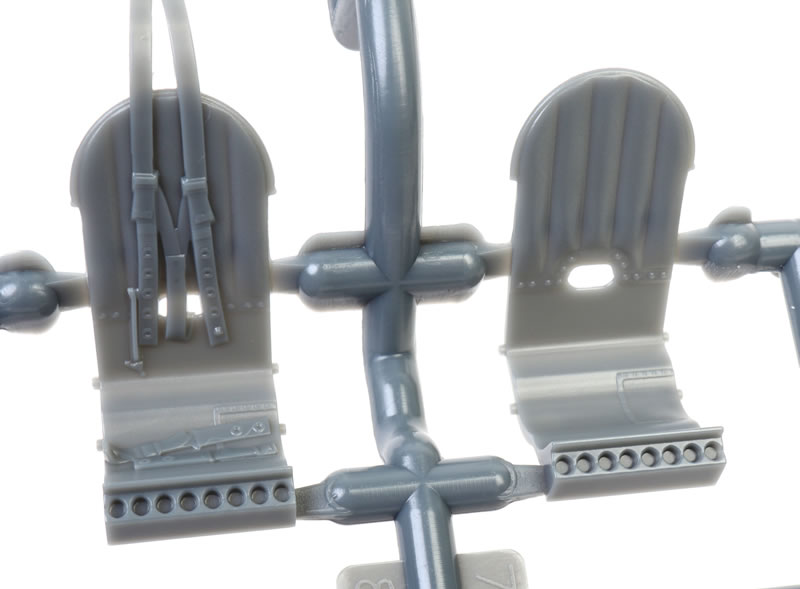
The cockpit floor accurately depicts the multi-layered bottomless effect. The control yoke is a separate part, allowing it to be posed to taste.
There is plenty of detail inside the fuselage aft of the pilot too.
Also interesting, Kotare calls out the main cockpit colour as Supermarine Interior Green Semi Gloss, also sometimes called Apple Green. The recommended Tamiya mix is 2 parts XF-71 IJN Cockpit Green and 1 part X-28 Park Green. Some cockpit elements such as the pilot's seat and the control column are called out as the more familiar Interior Grey Green.
The long kinked undercarriage hand pump on the starboard sidewall is accurate for an early to mid-production Spitfire.
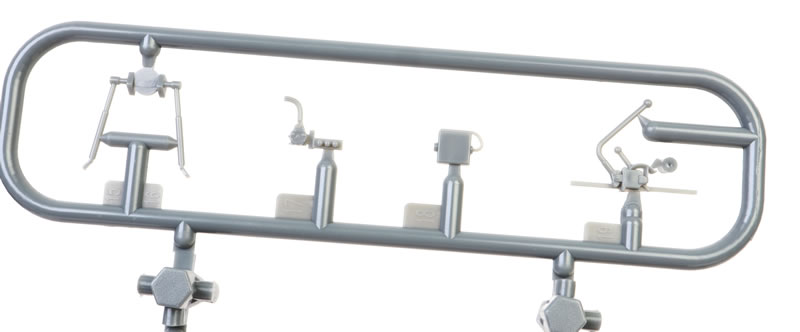
The fuselage has a number of separate inserts and hatches including the accumulator door, wireless access hatch, engine cowlings and separate spine.
The cockpit door may be posed open or closed.
Wings are broken down conventionally with full-span lower and separate port and starboard upper wing parts. A long span wing spar is included, ensuring the correct dihedral. The eight Browning .303 machine gun barrels are located in correctly spaced and recessed in the lower wing. The instructions suggest the barrels may be drilled out for more detail.
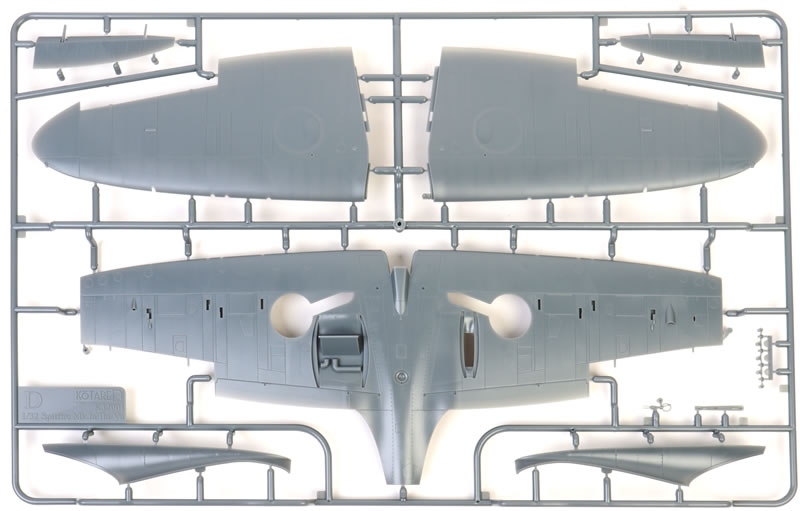
The wheel well walls are provided as a single part for each side. A really nice example of attention to detail is the jack for the early-style undercarriage part as separate parts for each landing gear well. You’ll need to drill or cut out a slot in the undercarriage walls to accommodate the jacks.
The five-spoke main wheels are supplied in two parts each (no vinyl - hooray!). They are bulged and flattened and keyed to make sure the flat spot sits on the ground.
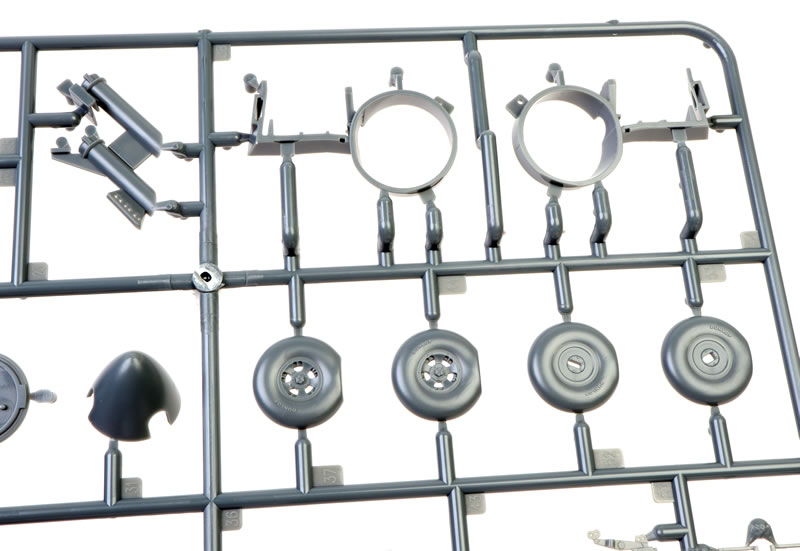
The wing fillets are separate parts, as are ailerons, elevators and rudder. The rudder and elevators are moulded with locating tabs, but you may simply cut these off if you wish to pose your rudder and elevators offset.
The kit offers the choice of two-bladed fixed wooden Watts, as well as the de Havilland propeller assemblies. The Watts propeller is split into two halves plus a separate cap.
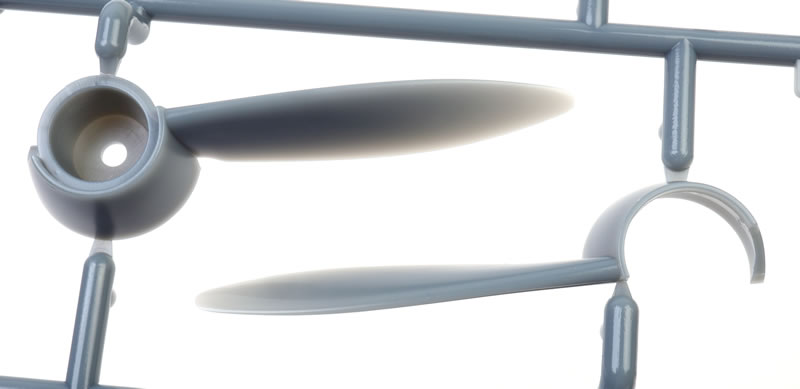
The de Havilland propeller is moulded as a single part with the pitch already set.
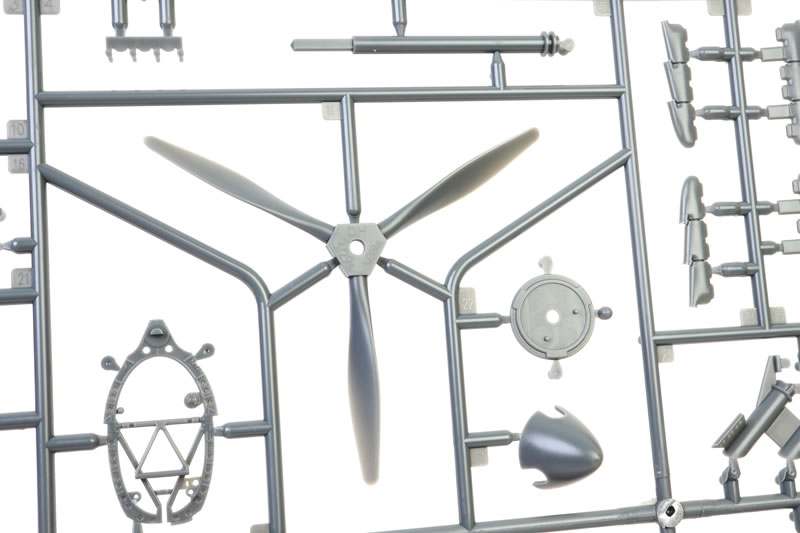
The clear parts are thin and free from distortion.
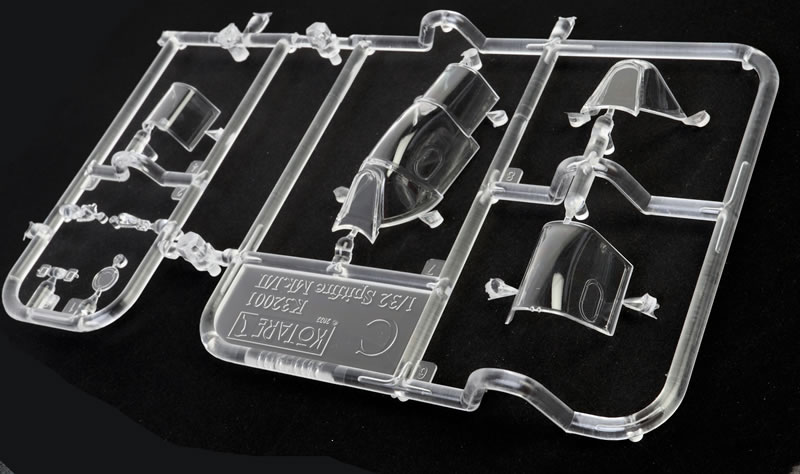
The canopy offers the choice of a single part if posed closed, or with separate windscreen, sliding section and rear for the open canopy option. The external armoured glass is moulded as part of the windscreen in both cases.
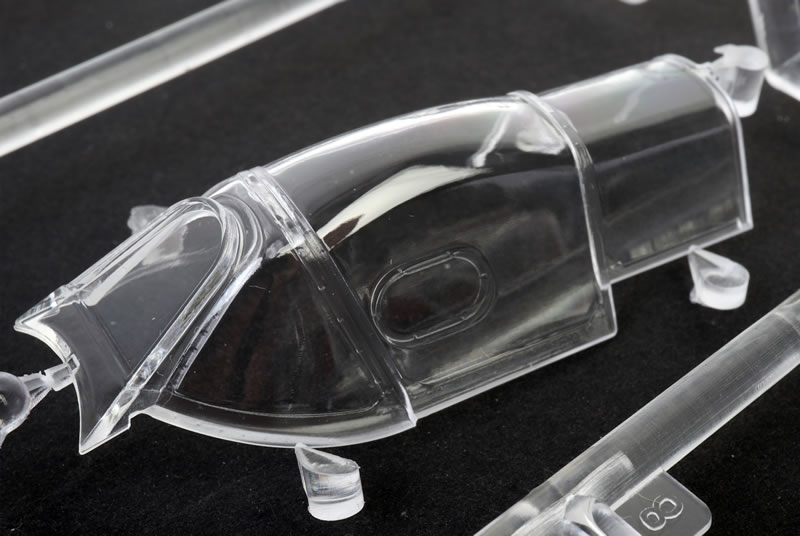
The new early-style flat canopy and un-armoured windscreen are similarly presented as three parts if posed open or a single part for a closed canopy.
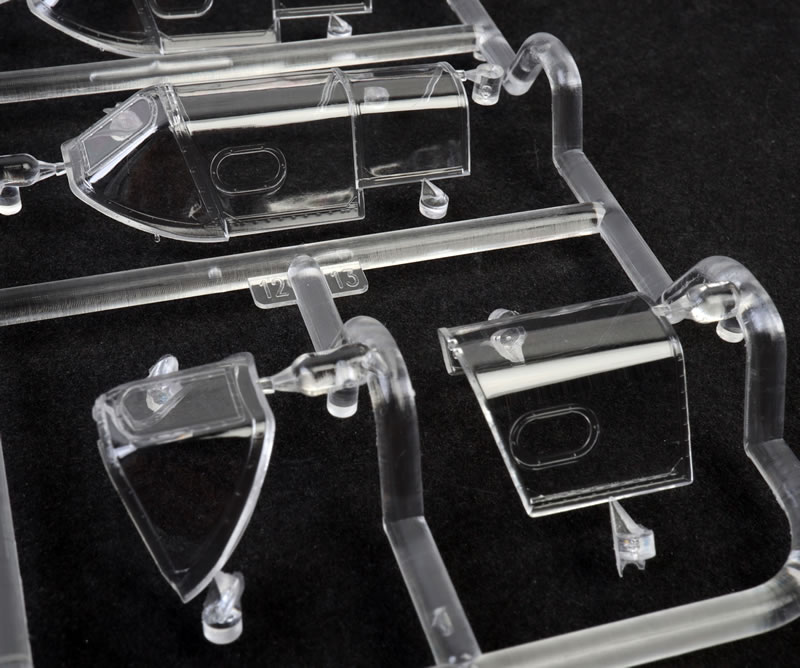
Instructions and Markings
The instructions are as much an educational experience as they are assembly directions. There are many detail notes as well as helpfully captioned reference photos and illustrations throughout.
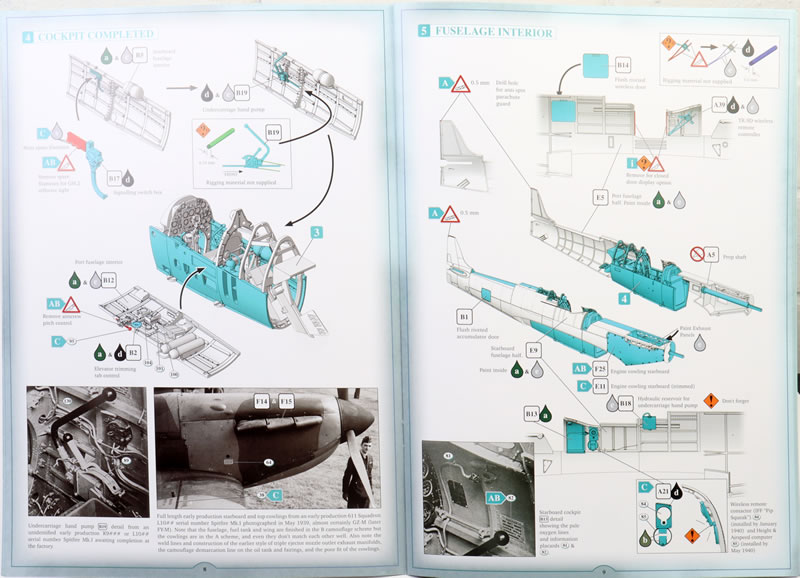
The 28 page full-colour A-4 book offers assembly instructions over 14 steps, four view colour illustrations for the three marking option plus reference photos and notes for each of the three marking options, stencil diagram and additional reference.
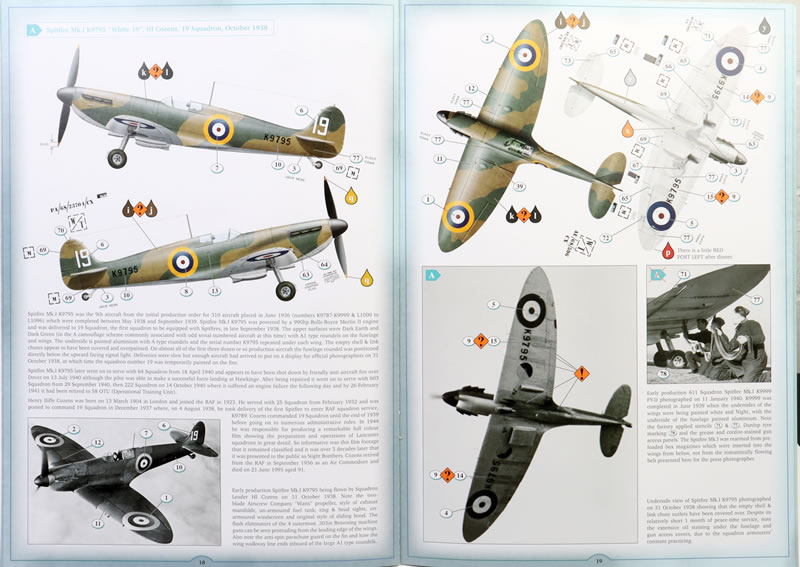
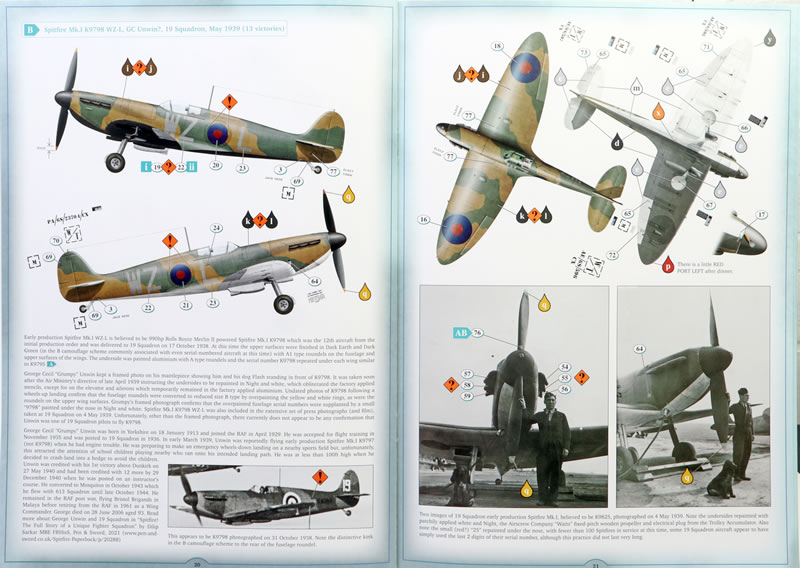
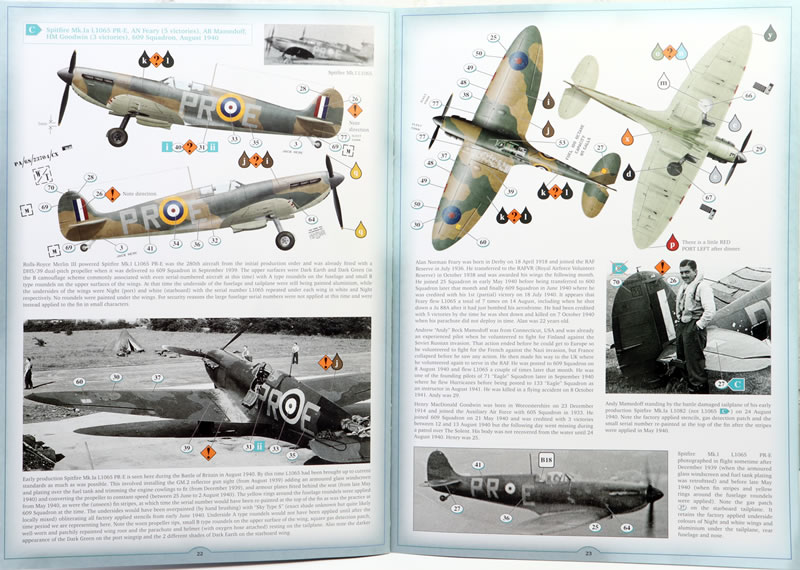
The large glossy decal sheet provides three marking options plus stencils, instrument panel decals, nicely random leading edge machine gun patches and stencils.
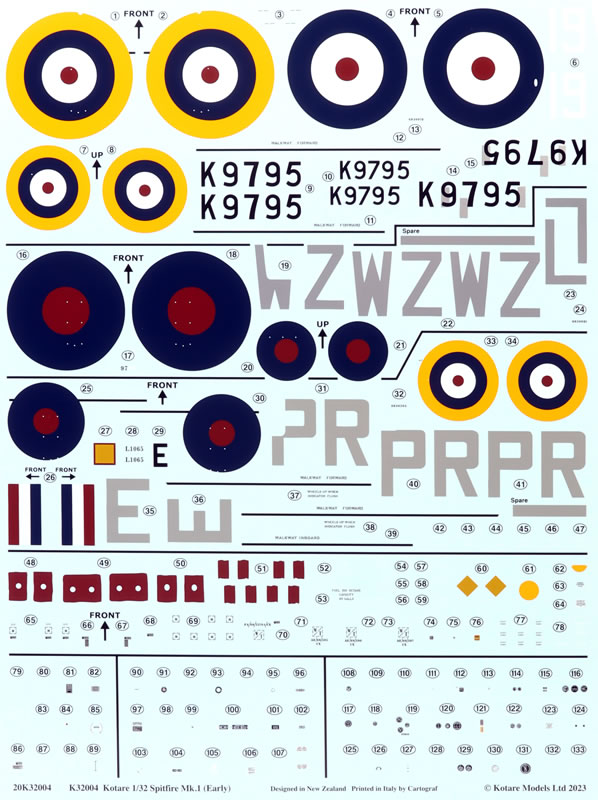
Registration and colour saturation are perfect on my sample. They are printed in Italy so presumably Cartograf – another indicator of high quality.
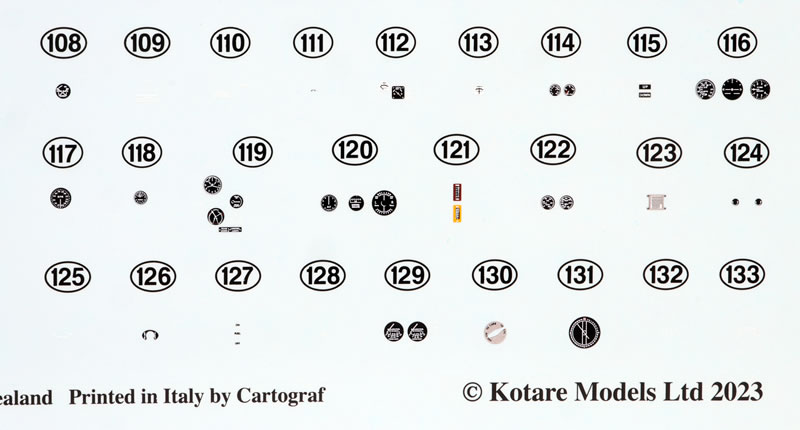
The sheet includes decal dials for the instrument panel and placards for the cockpit.
The inclusion of red dope patches for the machine gun openings in the wing leading edges is a nice touch too.
Another Spitfire? Yes please!
This is the first time that we have had a true early production Spitfire Mk.I in 1/32 scale.
Kotare Models has again delivered the Goldilocks Spitfire – detail and buildability are just right. The relatively modest parts count does not compromise detail at all.
Kotare's Spitfires are clearly the best 1/32 scale Spitfire Mk.I kits available today. Everything you need to model a beautifully detailed early and pre-war Spitfire is right here in the box.
Everything you need to model a beautifully detailed early and pre-war Spitfire is right here in the box. It looks like all the parts for the previous mid-production Spitfire Mk.Ia are still on the sprues too, so this represents a very versatile box of Spitfire bits.
This is another superb 1/32 scale Spitfire offering from Kotare.
Thanks to Kotare Models for the sample
Text and Images Copyright © 2023 by Brett Green
Page Created 23 January, 2024
Last updated
24 January, 2024
Back to HyperScale Main Page
Back to Reviews Page
|
Home
| What's New |
Features |
Gallery |
Reviews |
Reference |
Forum |
Search